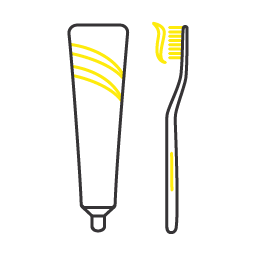With many business owners under the pump in the lead up to 30 June 2021, it is important to remember there is one deadline that is never pushed out, and that is EOFY.
30 June is a hard deadline so here are some last-minute reminders, tips, tactics and tricks to minimise your tax for the 2021 financial year.
1. immediate deduction for assets purchased [this is the big one for 30 June 2021]
One of the most popular tax strategies in recent years has been the instant asset write-off concession but with the COVID19 economic stimulus, the $150,000 threshold was removed [there’s now no limit] and the entities eligible to ‘immediately deduct’ the cost of assets has been dramatically expanded.
It’s a bit confusing now because we have 2 sets of rules that are relevant for FY 2021:
temporary full expenses [immediate deduction]
- Applies for purchases from 6 October 2020 [7.30pm AEDT] to 30 June 2022.
- Relevant for entities with turnover of less than $5 billion [pretty sure all readers of this will meet that threshold!].
- Only applies to second-hand depreciating assets purchased if your turnover is less than $50 million [aggregated basis with other entities].
- The assets must be first held, and first used or installed ready for use by 30 June 2021 to get a deduction in 2021 financial year [so no point rushing out and ordering something on 30 June if it is not installed and ready for use].
instant asset write-off
- Relevant if temporary full expensing does not apply.
- Must be purchased by 31 December 2020 and first used or installed ready for use before 30 June 2021.
- Given the temporary full expensing [as above] only really relevant for most businesses for assets purchased from 1 July 2020 to 6 October 2020 [7.30pm AEDT].
- Limit of $150,000 per asset or group of assets.
- Eligibility dependent on your aggregated turnover being less than $500 million.
- The instant asset write-off can be used for new and second-hand assets that would normally be subject to depreciation.
Here is a link to some handy ATO information.
Both provisions apply when:
You buy multiples of the same asset [eg a group of desks or chairs] as long as the cost of each individual asset is less than the threshold.
- Most business assets such as plant, equipment and motor vehicles are used in your business. However, the asset must be installed ready for use by 30 June 2021 in order to claim a tax deduction in the 2021 financial year.
- Deduction is limited to the business use portion [unless it is going to be subject to FBT like with a car].
- Purchasing a car, but the deduction is limited to the luxury car cost limit which is currently $59,136 [be mindful of potential FBT implications though].
- Does not apply to hard fit-out costs like walls, electrical, and plumbing but does apply to desks, air-conditioning units and computer systems.
2. write-off previously purchased assets if written down value for tax purposes is <$150,000 [small businesses with an aggregated turnover of less than $10 million only]
One of the flow-on effects of the increased instant asset write-off threshold is that if you have chosen to apply small business simplified depreciation rules, you can now also write-off any accumulated balance of other depreciable assets as long as the balance of these assets is less than $150,000. The simplified depreciation rules apply if you have an aggregated turnover for your group of less than $10 million.
3. deductible superannuation contributions
A common strategy is to top up your super balance by making tax-deductible contributions to reduce the tax liability of you or your business.
The annual limit for tax-deductible contributions you can make for the 2021 financial year is $25,000 [increasing to $27,500 from 1 July 2021]. This cap includes compulsory employer contributions as well as voluntary contributions made through the business or from your personal name.
The super fund will incur a 15% tax on the contribution. So, for an individual in the top marginal tax rate [47%] the potential tax benefit is up to 32%. This benefit will be reduced for those individuals with adjusted taxable income over $250,000 who are paying the additional 15% surcharge on super contributions.
You may be able to contribute even more than the $25,000 concessional contributions cap if you have unused contribution thresholds from previous years. This is only available if your super balance is less than $500,000 and is somewhat complicated depending on your personal situation. Seek advice before making any contributions. You can check out the amount of the threshold available from previous years on your my.gov account.
For more detail on super changes, check out Super + Financial Planning Director Megan Kelly‘s blog on ‘Some last-minute super opportunities and rule changes’.
4. superannuation for employees
You are only able to claim a tax deduction for superannuation contributions when the payment is made. For employers, this means you need to pay your compulsory 9.5% employee super by 30 June 2021 to get a tax deduction in the 2021 financial year.
Don’t forget guaranteed super rate increases to 10% from 1 July 2021, read more here.
5. bad debts
If you have any debtors that are unlikely to be collected, consider whether these should be written off before 30 June 2021 as ‘bad’ to claim a tax deduction. A debt is considered bad when a genuine commercial decision has been made that it is no longer recoverable. So, take the time to review your debtors list for any debts that can be written off.
6. get your trust distributions right
For those of you with businesses or investments held in trust structures it is important to consider the most tax effective way to distribute any income. This must generally be documented by way of resolution prior to 30 June each year.
If you have a business making decent profits, consider distributing some of the business profits to a company to access the corporate tax rate. This will either be 26% or 30% depending on your circumstances.
If you are already in the top tax bracket of 47% in your own name, this can be a useful tax deferral strategy. Just remember that this has to come out of the company at some point in the future as a dividend.
7. stock on hand
Where you carry on a business that has goods for resale it is important to review your stock on hand on 30 June 2021 [and do a stocktake]. For each individual item of stock, you can choose to value it at cost, market value or written-off altogether where the stock has no value. The best way to reduce the amount of income from trading stock is to consider which value provides the lowest amount for each individual item of stock.
8. bringing expenses forward and pushing income out [ie timing]
Most tax planning strategies involve bringing expenses forward and pushing income out. While such strategies only change the timing of tax, it can represent a permanent benefit if tax rates are shifting, or new rules are being implemented.
Keep an eye out for some special rules around prepayments and unearned income but generally you should be able to get a deduction for something in the year you become ‘definitively committed’ to it. For example, if you have bonuses owing to an employee at 30 June that can be definitively calculated as at 30 June and you could be legally forced to pay the amount, you should be eligible for a deduction for the amount.
Of course, that is only the case if you pay tax on an accruals basis [which most businesses do]. If you are already paying tax on a cash basis, it doesn’t matter, and it all comes down to the timing of cold hard cash.
9. manage capital gains tax liabilities
If you have sold or are looking to sell investments [like shares] this year it is important to consider how you can manage any capital gains tax liability. One simple trick is to review your investment portfolio for underperforming assets. Consider selling some of these assets before 30 June and triggering a capital loss that can be offset against gains made. If you derived this capital gain in a trust structure, how you distribute the capital gain and who you distribute it to is critical. Get your trust distributions right – especially if you are looking to apply small business CGT concessions.
10. understand your tax timeline
Now is a great time to think about the tax payable going forward. No one likes surprises, so take the time to review your tax position and put enough aside so you can sleep at night comfortably.
11. loss carry-back measures
For companies with a turnover of less than $5 billion, the temporary loss carry-back rules will be available until the 2022-23 financial year. This measure allows entities with tax losses from FY 2020 to FY2023 to carry back those losses and apply them to previously taxed profits from as far back as the FY 2019 financial year. Essentially the idea is to create a refund of tax paid in previously paid.
The offset is first available when companies lodge their FY 2021 tax returns and can apply also for any losses made in FY2020 against profits made in FY2019.
The key takeaway to note here is that this measure is only available for corporate entities, compared to the temporary full expensing of assets – this measure does not apply to businesses who operate through a trust structure.
This provision may have application in specific industries, but we are seeing very little general application at present.
12. dividends, distributions, drawings or wages
Look at how you take amounts of money out of your business. Whether you take money as wages, drawings, dividends or distributions, they can have a material impact on your overall tax liability – especially the timing of it. So don’t just feel like you take everything out as wages and look at your options – you might even save some payroll tax.
Just be careful though, especially if you are a professional services business;the ATO has historically had some guidelines on how much needs to end up in your personal tax return [but these rules are a bit ‘grey’ at the moment].
13. private company loans
If you have loaned monies from your private company in prior financial years and these loans were not repaid by lodgement of the tax return, you will have to document these loans and make your minimum repayments by 30 June 2021.
If you do not accrue interest and make minimum repayments on these loans by 30 June each year, in accordance with Div 7A of the Tax Act, you may have adverse tax consequences in the form of an unfranked dividend in your assessable income.
If you are experiencing financial hardship due to COVID-19, the ATO are providing an extension of the repayment period for 30 June 2021 for up to 12 months. You need to make this application to the ATO and it will only be granted where you do not have funds or other assets that can be readily realised to meet the repayment.
You can find more information here.
14. company tax rates are still going down
Company tax rates are continuing to drop for businesses with aggregated annual turnover less than $50 million and meeting the ‘base rate entity’ income tests [essentially if they are a business].
For the year ended 30 June 2021 the company rate of tax is 26%.
From 1 July 2021 the company rate of tax is 25%.
Of course, with a reduction in the company tax rate, the rate of franking credits also reduces so this is only really a benefit if you are continuing to reinvest profits back into the business.
15. get your legal structure right
The best tax planning strategy is to get your legal structure right for your specific circumstances. The lower the company tax rate, the more appealing it is to be trading through a company structure, especially if you have significant debt in the entity.
Check out a blog by our Sydney Director Rebecca Mihalic on the use of trusts for trading entities here.
16. tax depreciation reports on investment properties
If you have an investment property, maximise your depreciation deductions by getting a quantity surveyors report. Typically, you can get a deduction equal to 2.5% per annum of the original cost to construct the building and on major improvements plus depreciation on any plant and equipment identified in the report.
17. negative gearing – is it still a thing?
With many investment properties these days producing more of a positive return each year [before capital growth] given reductions in interest rates and increasing rents, there is less talk of negative gearing, but it is still a thing. Of course, as always with any investment strategy, you should never pay $1 for a 47 cent tax reduction but if the capital growth is likely to be there, negative gearing can still be a very effective tax minimisation strategy.
18. don’t forget to update logbooks
If you claim a deduction for the work/business use of your car, don’t forget you need to keep a new logbook every 5 years or when your usage changes material [for example if you move homes].
Without a logbook your deduction is limited to $3,600 using the cents per kilometre method [assuming you can justify that you travelled 5,000 kilometres for work/business in the year]. The ATO is definitely more actively reviewing logbooks these days.
19. entertainment is still a topic of interest to the ATO
Anything regarded as entertainment is generally not tax deductible. There are a couple of exceptions to this rule, but these essentially require you to pay at least some FBT.
A few notes on entertainment deductions:
- If there is alcohol, the ATO consider you to be having too much fun and therefore it is considered ‘entertainment’
- Food while travelling is fine
- Food for events, training, workshops is fine so long as no alcohol
- A long lunch with the team is potentially subject to Fringe Benefits Tax
- A long lunch with clients and prospects is generally not deductible.
- Corporate box at the footy – depends on who went but still considered entertainment.
20. independent contractors only work when they are truly on commercial terms
Independent contractor arrangements remain one of the most contested areas of tax legislation. Essentially the ATO can look through an independent contractor structure to tax you individually as if you were an employee.
With the gigification of the economy, we are seeing more and more reasons for the ATO to challenge independent contractor arrangements again. The ATO rules are confusing enough on their own but when overlaid with the Fair Work rules, it gets even messier.
Our advice would be to tread very lightly and revert to making sure any independent contractors are operating as a truly commercial operation [just like any other business].
21. keep those darn receipts
Boring I know but the Australian tax system is a ‘self-assessment’ system, so you need to keep evidence to substantiate any claims [minor exception for individuals claiming less than $300]. If in doubt, keep the receipt and ask your accountant.
Other evidence requirements include:
- For capital assets you need to keep purchase documents until you sell the item and then a further five years after lodging the sale year tax return.
- If travelling overseas [unlikely in the current times, we know] for business or work purposes you need to keep a diary of your activities while overseas.
- If you are paid a travel allowance, you do not need to keep receipts if your claim is limited to the allowance amount, and it is paid in accordance with the ATO guidelines.
We love getting nerdy with the numbers and saving you tax so if you have any questions, we’re here to help! You can send us an email at oneplace@businessdepot.com.au or give us a buzz on 1300BDEPOT.




















































